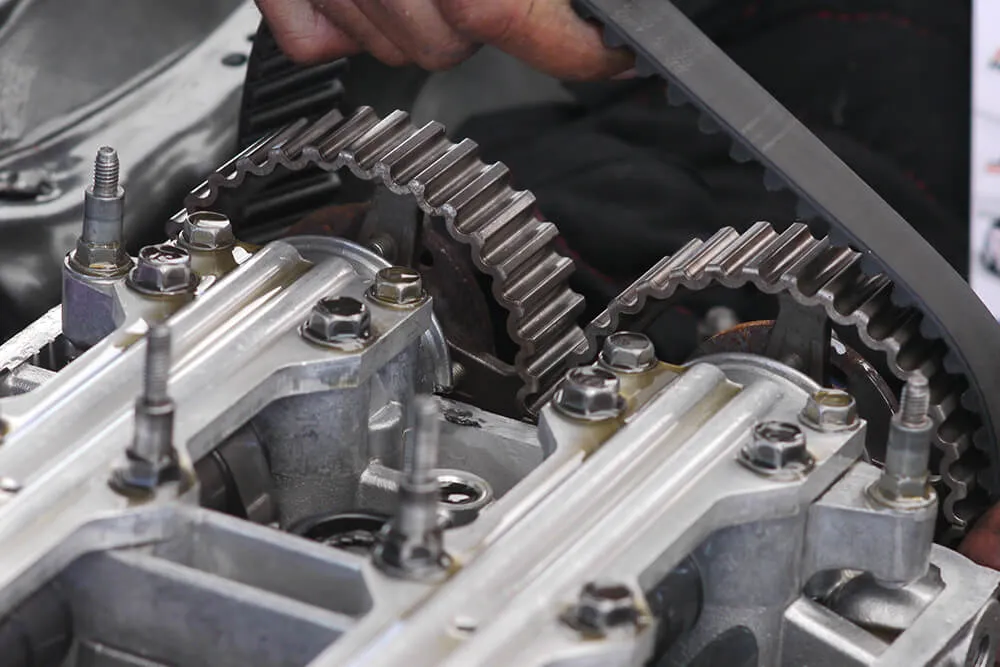As the winter weather begins to fade away and the days get longer, many things come to mind: spring cleaning, gardening, and for car owners, ensuring their vehicles are in top condition for the warmer months ahead. One vital component of a car that often gets overlooked but is crucial for its proper functioning is the timing belt. In this article, we will delve into why timing belt maintenance is essential, especially as we transition into spring.
What is a Timing Belt?
Before we discuss the importance of timing belt maintenance, let’s first understand what a timing belt is and what role it plays in your vehicle. A timing belt is a crucial part of an internal combustion engine that synchronizes the rotation of the crankshaft and the camshaft. This synchronization ensures that the engine’s valves open and close at the proper times during each cylinder’s intake and exhaust strokes.
Signs Your Timing Belt Needs Attention
Like all components in a vehicle, timing belts wear out over time and need to be replaced at regular intervals. Ignoring the maintenance of your timing belt can lead to severe engine damage and costly repairs. Here are some signs that indicate your timing belt may need attention:
- High-Pitched Whining Noise: If you hear a high-pitched whining noise coming from the engine, it could be a sign of a worn-out timing belt.
- Visible Wear and Tear: Inspect your timing belt for any signs of wear, such as cracks, fraying, or visible damage.
- Engine Misfires: A failing timing belt can cause the engine to misfire or run poorly.
- Excessive Vibration: Vibrations coming from the engine could indicate a problem with the timing belt or related components.
- Engine Won’t Start: A broken timing belt will prevent the engine from starting altogether.
If you notice any of these signs, it’s essential to have your timing belt inspected by a professional mechanic as soon as possible.
The Importance of Timing Belt Maintenance
Now that we understand what a timing belt is and how to recognize signs of wear, let’s explore why timing belt maintenance is critical, especially as we usher in the spring season:
- Prevent Costly Repairs: Regularly inspecting and replacing your timing belt according to the manufacturer’s recommendations can help prevent costly engine repairs down the line.
- Ensure Engine Performance: A properly functioning timing belt is essential for optimal engine performance, fuel efficiency, and emissions control.
- Enhance Safety: A broken timing belt can lead to complete engine failure, which can be dangerous if it occurs while driving. Maintaining your timing belt ensures your safety on the road.
- Extend Engine Life: By taking care of your timing belt, you can extend the life of your engine and avoid premature wear and tear on internal components.
Spring Maintenance Checklist
As you prepare your vehicle for spring, make sure to include timing belt maintenance in your checklist. Here are some essential steps to ensure your timing belt is in good condition:
- Consult Your Owner’s Manual: Check your vehicle’s owner’s manual for the recommended timing belt replacement interval. Most manufacturers suggest replacing the timing belt every 60,000 to 100,000 miles.
- Inspect for Wear: Visually inspect the timing belt for any signs of wear, including cracks, fraying, or slack. If you notice any damage, have it replaced immediately.
- Schedule a Maintenance Appointment: If it’s time to replace your timing belt or if you’re unsure about its condition, schedule a maintenance appointment with a certified mechanic.
- Consider Related Components: While replacing the timing belt, consider replacing other related components such as the water pump, tensioner, and pulleys for a comprehensive maintenance approach.
By following these steps and staying proactive about your timing belt maintenance, you can ensure a smooth and safe driving experience throughout the spring and beyond.
Final Thoughts
Timing belt maintenance is a critical aspect of vehicle ownership that should not be overlooked, especially as we transition into the spring season. By understanding the role of the timing belt, recognizing signs of wear, and staying proactive about maintenance, you can avoid costly repairs, ensure optimal engine performance, and enhance your overall driving safety. Remember, prevention is always better than cure when it comes to timing belt maintenance. Plan ahead, follow your manufacturer’s recommendations, and schedule regular inspections to keep your vehicle running smoothly for years to come.

